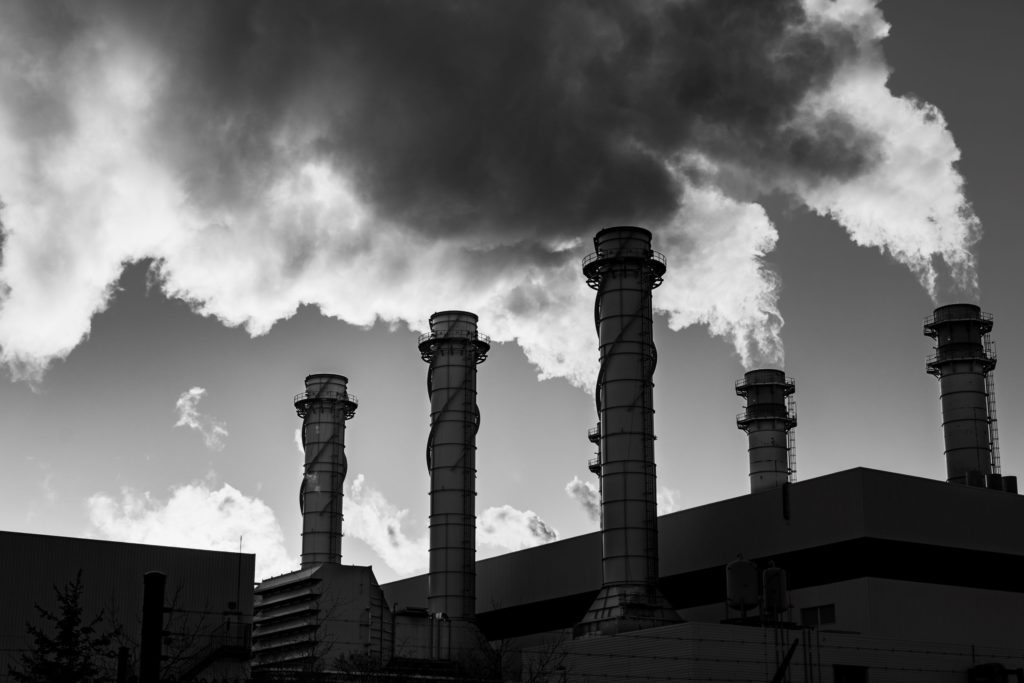Last week, on Monday November 14, as part of its Economic Outlook and Fiscal Review, the Ontario government officially announced it would be developing a voluntary clean energy credit (CEC) registry.
This plan is a total sham, in so many ways.
The secrecy of the scheme
Ontario Power Generation has been quietly selling off Clean Energy Credits from its hydro and nuclear power to businesses in the United States since about 2013. But we just found out about it this year.
The company has earned close to $7.2 million from these credits so far, and it expects to make another $13.9 million between 2022 and 2026. Where is all of this money going? They won’t say. But they should, because Ontario Power Generation is a crown corporation – the public should know how the profit is being spent.
Now, the Ontario government is crafting an official Clean Energy Credit system that will presumably require transparency. The government’s recent Economic Outlook document claims “[f]unds generated through the purchases of CECs could be returned to ratepayers, help lower electricity costs, or support future clean energy generation…” (emphasis added). But it is not yet clear whether these options will be required in the new plan.
Allowing others to pollute
Meanwhile, the credits are already being used by companies in the U.S. to make their operations appear cleaner than they are.
For example, several months ago news broke that Microsoft, the largest software company in the world, cut a deal with Ontario Power Generation to buy credits from Ontario’s electricity system.
The agreement provides Microsoft ongoing Clean Energy Credits so it can claim to be using low carbon electricity. But it actually just gives the company an excuse to continue its regular operations, without decreasing its own greenhouse gas emissions.
A large chunk of the Clean Energy Credits are being sold to coal-burning jurisdictions, which can now say they are achieving net zero emissions – while continuing to burn coal. It is as if Ontario is again burning coal since it’s giving other jurisdictions an excuse to continue doing so.
 Doesn’t decrease emissions
Doesn’t decrease emissions
Proponents of Clean Energy Credits argue that trading systems like these incentivize businesses to build cleaner electricity sources.
The reality is that in Canada, decisions about adding new power generation are made by provincial governments, not individual investors.
So it’s up to governments to choose and procure renewable energy sources for their grids. Trading schemes like the one being proposed (well, already being used), do almost nothing to increase investments in renewable power or drive down greenhouse gas emissions.
We lose our claim to clean electricity
While companies that buy the Clean Energy Credits can say they are lowering emissions, we in Ontario lose our ability to claim we lowered the same emissions.
That’s because we can’t double count the credits. If the Clean Energy Credits are being used in the U.S., then they can’t also be counted here.
That means Ontario can’t rely on its own relatively clean electricity to help meet its emissions target.
It also means Ontario businesses and municipalities can’t claim to be using clean energy either. Ontario businesses that are attempting to lower their carbon footprint can no longer count their electricity use as having low emissions. This could impact their reputations and ability to meet climate responsibility goals. Municipalities that have made commitments to reduce carbon emissions can no longer rely on clean electricity to bring them closer to their emissions reductions targets.
The credit scheme actually poses serious problems for both businesses and municipalities who can no longer accurately calculate their emissions and may end up misrepresenting them in their inventories.
It’s terribly unfair for the Ontario government to be removing these credits from Ontario after telling businesses and municipalities for years that they can rely on a clean electricity grid to meet their climate goals. By promoting this clean electricity benefit, the government has promised the asset to Ontario businesses and municipalities and should not be able to now sell them abroad.
 Ontario’s grid is about to get a lot dirtier
Ontario’s grid is about to get a lot dirtier
Ironically, while the Ontario government has been boasting about a clean electricity grid and wants to sell the credits, it’s simultaneously making our energy grid a lot dirtier.
Last month the government announced it will be building new gas plants to generate electricity for the province and it’s in the process of recontracting existing gas plants to operate far into the future.
The government’s own electricity agency, the Independent Electricity System Operator (IESO) predicts greenhouse gas pollution from Ontario’s gas plants will increase by 375 per cent by 2030 and by more than 600 per cent by 2040 (compared to the 2017 level).
It’s quite disingenuous for the Ontario government to be bragging about a clean electricity grid (and selling off the feat) while simultaneously dismantling it. It also raises questions about the feasibility of the trading scheme which will quickly lose Clean Energy Credits to sell.
We paid for the clean electricity grid
Ontario’s electricity system became relatively clean as a result of public pressure and previous government action to phase out the use of coal plants. This effort reduced greenhouse gas pollution from the electricity sector by an astonishing 93 per cent between 2005 and 2017.
The initiative was paid for with public funds and by Ontario electricity ratepayers – us. It’s unfathomable that the government would now sell off the investments and accomplishment to U.S. corporations, or any other bidders.
We need real climate action
Rather than creating a credit trading system that does nothing to reduce emissions, the province should take real climate action by transitioning to a non-emitting energy grid. That means phasing out – rather than ramping up – the use of gas plants for electricity generation.
If the province is so proud of its clean electricity grid, it should take action to maintain it, and not sell off credits to corporations for their creative carbon accounting.
TAKE ACTION: Tell Ontario to phase out – not ramp up – polluting gas power





 Doesn’t decrease emissions
Doesn’t decrease emissions  Ontario’s grid is about to get a lot dirtier
Ontario’s grid is about to get a lot dirtier 



